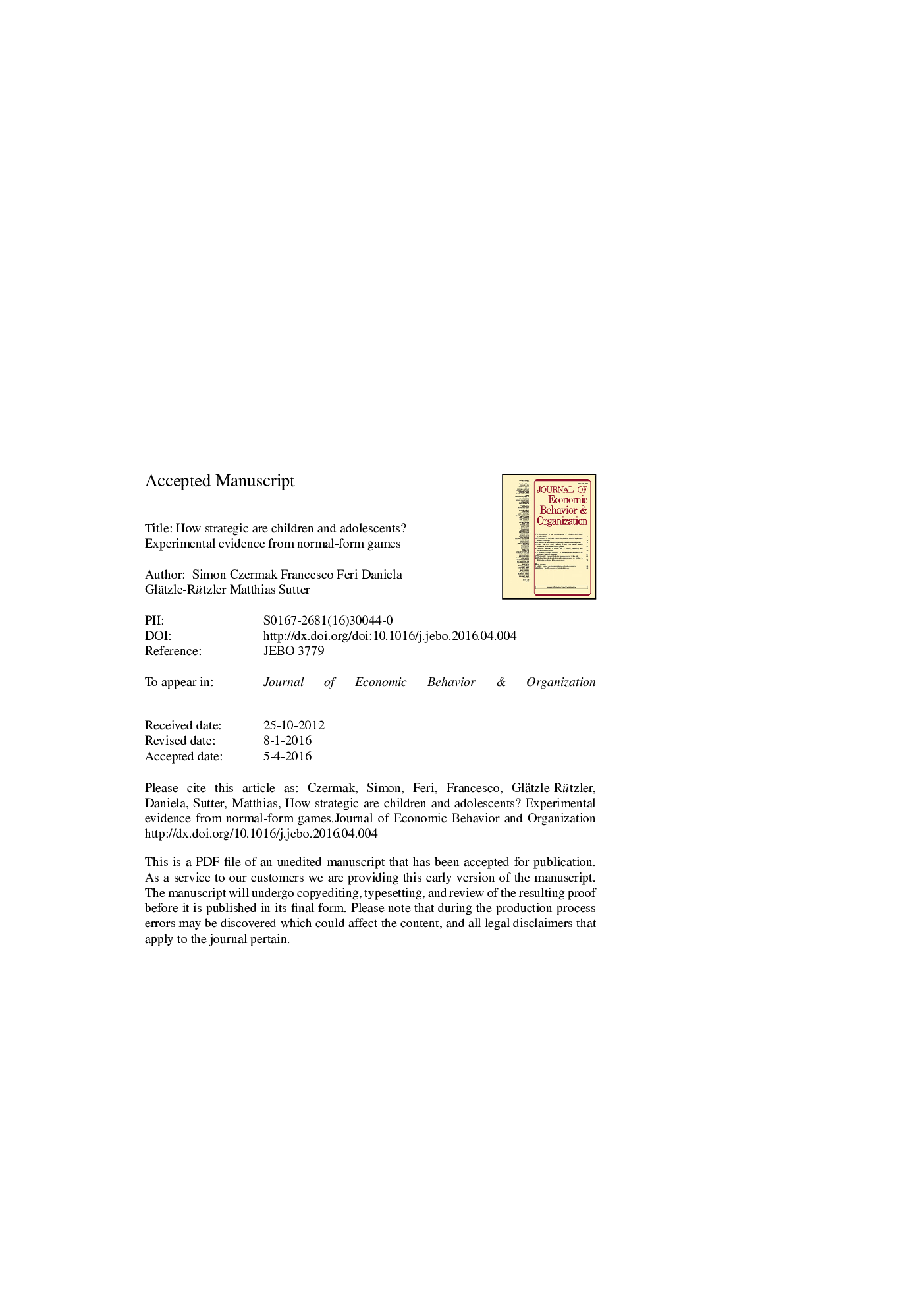| Article ID | Journal | Published Year | Pages | File Type |
|---|---|---|---|---|
| 7242804 | Journal of Economic Behavior & Organization | 2016 | 45 Pages |
Abstract
We examine the strategic sophistication of 196 children and adolescents, aged 10-17 years, in experimental normal-form games. Besides choices, we also elicit first- and second-order beliefs. The share of subjects playing Nash or expecting opponents to play Nash is fairly stable across all age groups. The likelihood of playing best response to own beliefs increases in math skills. Using a mixture model, about 40% of subjects are classified as a strategic type, while the others are non-strategic. The distribution of types is somewhat changing with age. The estimated error rates also show some dependency on age and gender.
Related Topics
Social Sciences and Humanities
Economics, Econometrics and Finance
Economics and Econometrics
Authors
Simon Czermak, Francesco Feri, Daniela Glätzle-Rützler, Matthias Sutter,
